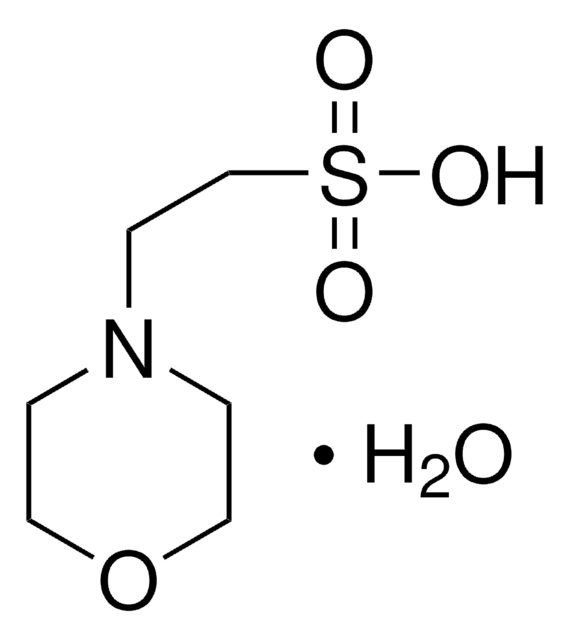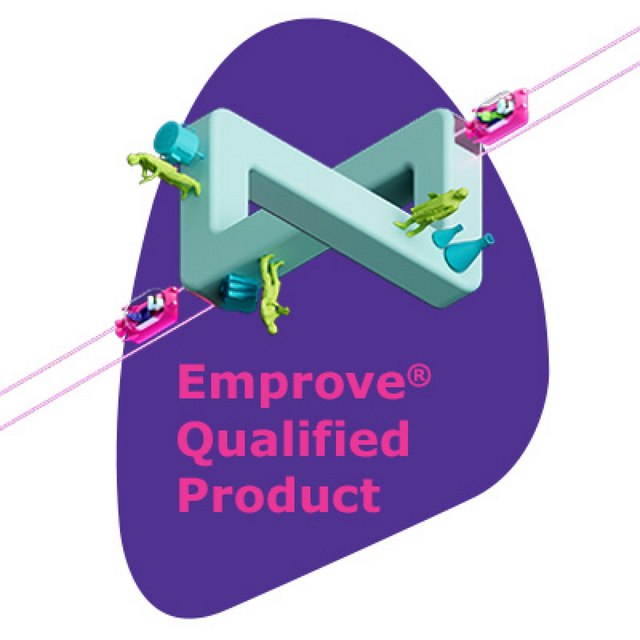RES0114M-A7
MES sodium salt
Synonym(s):
2-(N-Morpholino)ethanesulfonic acid sodium salt, 4-Morpholineethanesulfonic acid sodium salt
Sign Into View Organizational & Contract Pricing
Select a Size
All Photos(2)
Select a Size
Change View
About This Item
Empirical Formula (Hill Notation):
C6H12NNaO4S
CAS Number:
Molecular Weight:
217.22
Beilstein/REAXYS Number:
3765682
EC Number:
MDL number:
UNSPSC Code:
12161700
NACRES:
NA.21
Recommended Products
biological source
synthetic
Quality Level
form
powder
technique(s)
cell culture | mammalian: suitable
impurities
Endotoxin and microbial, tested
useful pH range
5.5-6.7
pKa
6.1
suitability
suitable for manufacturing use
foreign activity
Cytotoxicity, DNase, NICKase, RNase, and Protease; tested
SMILES string
[Na+].[O-]S(=O)(=O)CCN1CCOCC1
Looking for similar products? Visit Product Comparison Guide
General description
Our SAFC® portfolio of high-quality raw materials for use in biopharmaceutical processing withstands strict quality control procedures plus the documentation and expertise to help our customers meet requirements as defined by the M-Clarity Program.
M-Clarity Program
Buffer quality is vital for the success of biopharmaceutical processes, because buffers are indispensable in nearly every production step.
Our broad portfolio of buffer materials manufactured under appropriate controls is tailored to your needs. Ranging from non-GMP grades for low-risk application, to IPEC-PQG GMP for higher-risk applications, we have products covering all your manufacturing needs.
M-Clarity Program
Buffer quality is vital for the success of biopharmaceutical processes, because buffers are indispensable in nearly every production step.
Our broad portfolio of buffer materials manufactured under appropriate controls is tailored to your needs. Ranging from non-GMP grades for low-risk application, to IPEC-PQG GMP for higher-risk applications, we have products covering all your manufacturing needs.
Application
MES Sodium is a biological buffer often referred to as a “Good′s” buffer. The pKa of MES is 5.96 which makes MES an ideal candidate for cell culture media and protein based buffer formulations to maintain a stable environment in solution. MES Sodium is considered to be non-toxic to culture cell lines, highly water soluble and provides high-solution clarity.
MES Sodium is used in cell culture media, biopharmaceutical buffer formulations both upstream and downstream and diagnostic reagents. MES based buffers are used in purification bioprocesses of antibodies, peptides, proteins and blood components.
MES Sodium is used in cell culture media, biopharmaceutical buffer formulations both upstream and downstream and diagnostic reagents. MES based buffers are used in purification bioprocesses of antibodies, peptides, proteins and blood components.
Packaging
Product is available in the following package sizes:
RES0114M-A701X: 100g container
RES0114M-A702X 1kg container
RES0114M-A704X: 10kg container
RES0114M-A705X: 25kg container
RES0114M-A701X: 100g container
RES0114M-A702X 1kg container
RES0114M-A704X: 10kg container
RES0114M-A705X: 25kg container
Legal Information
SAFC is a registered trademark of Merck KGaA, Darmstadt, Germany
replaced by
Product No.
Description
Pricing
Storage Class
11 - Combustible Solids
wgk_germany
WGK 1
flash_point_f
Not applicable
flash_point_c
Not applicable
Choose from one of the most recent versions:
Already Own This Product?
Find documentation for the products that you have recently purchased in the Document Library.
Customers Also Viewed
Our team of scientists has experience in all areas of research including Life Science, Material Science, Chemical Synthesis, Chromatography, Analytical and many others.
Contact Technical Service



